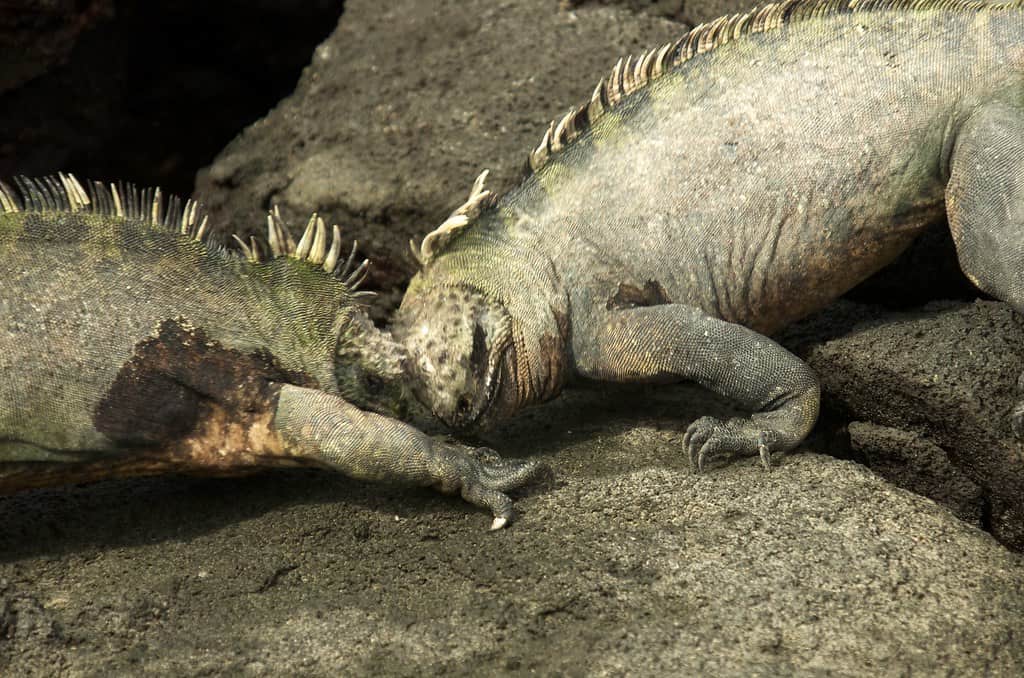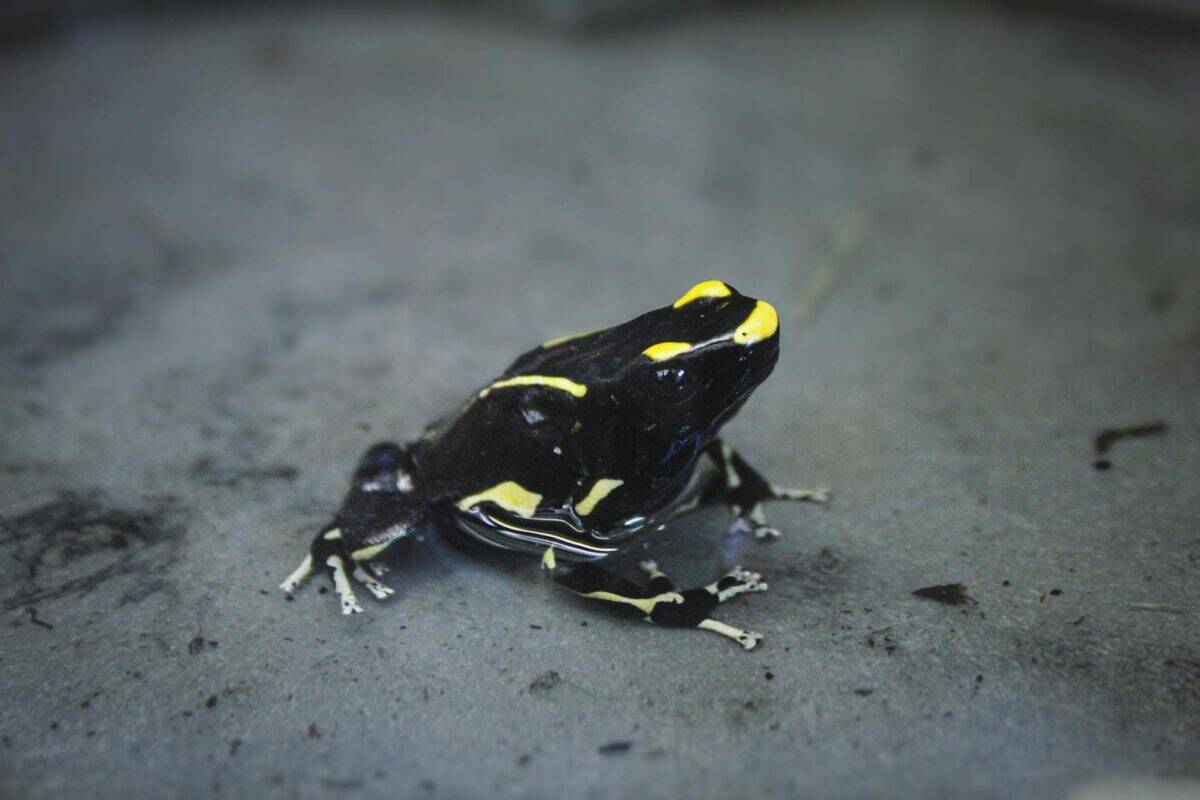Ecuador might be one of South America’s smaller countries, but it packs an incredible punch when it comes to wildlife diversity. From the cloud forests of the Andes to the pristine waters surrounding the Galápagos Islands, this remarkable nation offers some of the most extraordinary animal encounters on Earth. Whether you’re trekking through the Amazon rainforest or snorkeling with sea lions, Ecuador’s creatures will leave you speechless and wanting more.
Giant Galápagos Tortoises

These gentle giants are living legends, some weighing over 500 pounds and living well beyond 100 years old. The Giant Galápagos Tortoises move with the wisdom of centuries, their ancient eyes having witnessed volcanic eruptions and evolutionary changes that shaped their island home. You can observe these magnificent creatures at the Charles Darwin Research Station on Santa Cruz Island, where conservation efforts have brought several subspecies back from the brink of extinction. Each tortoise has its own personality – some are curious and approach visitors, while others prefer to munch on cactus pads in peaceful solitude. Their dome-shaped shells tell stories of adaptation, with different island populations developing unique shell shapes based on their specific environments.
Blue-Footed Boobies

Nothing quite prepares you for the comical sight of blue-footed boobies performing their elaborate mating dance, lifting their bright blue feet high in the air like they’re showing off new shoes. These seabirds are fishing masters, diving from heights of up to 80 feet into the ocean at speeds that would make Olympic divers jealous. The intensity of their blue feet actually indicates their health and fitness – the brighter the blue, the more attractive they are to potential mates. You’ll find them nesting on rocky shores throughout the Galápagos, where they’re surprisingly unafraid of humans and will continue their daily routines just meters away from amazed visitors. Their synchronized diving displays create spectacular splashes that echo across the volcanic coastlines.
Spectacled Bears

South America’s only bear species roams the cloud forests of Ecuador’s Andes Mountains, wearing distinctive cream-colored markings around their eyes like natural sunglasses. These incredible climbers spend much of their time high in the canopy, building day beds from branches and feasting on bromeliads and fruits. Spotting a spectacled bear requires patience and luck, as they’re naturally shy and prefer the misty, remote areas of Sangay and Podocarpus National Parks. Their powerful claws, designed for climbing rather than hunting, make them excellent tree navigators who can scale vertical trunks with surprising grace. Each bear’s facial markings are unique, like fingerprints, allowing researchers to identify individuals and track their movements through the mysterious cloud forest.
Pink River Dolphins

The Amazon’s most mystical residents, pink river dolphins, glide through Ecuador’s muddy waterways like aquatic ghosts with their rose-tinted skin and permanent smiles. These intelligent mammals can turn their heads 90 degrees and have been observed using tools, displaying problem-solving abilities that rival those of their oceanic cousins. Local legends say these dolphins are shapeshifters who transform into handsome men during festivals, adding an air of magic to every encounter. You’ll often see them surface near riverboats in the Yasuní National Park area, their dorsal fins cutting through the water as they hunt for fish in the tannin-dark rivers. Their playful nature sometimes leads them to interact with swimmers, though they’re wild animals that deserve respectful observation from a distance.
Poison Dart Frogs

Don’t let their tiny size fool you – Ecuador’s poison dart frogs pack enough toxins to stop a human heart, yet they’re also some of the most beautiful creatures in the rainforest. These jewel-toned amphibians, no bigger than your thumb, display warning colors so vibrant they seem to glow against the forest floor’s browns and greens. The golden poison frog, found in Ecuador’s coastal rainforests, contains enough batrachotoxin to kill ten adult humans, making it one of the most toxic animals on the planet. Indigenous communities have used their poison for centuries to tip hunting arrows, though captive-bred frogs lose their toxicity without their natural diet of specific ants. Their intricate parenting behaviors include carrying tadpoles on their backs to water-filled bromeliads, creating tiny nurseries high in the forest canopy.
Marine Iguanas

Imagine a dragon that learned to swim, and you’ll have a pretty good picture of the Galápagos marine iguana – the world’s only ocean-going lizard. These prehistoric-looking reptiles have evolved to dive up to 30 feet underwater, holding their breath for over an hour while grazing on underwater algae like scaly sea cows. Their black skin absorbs heat from the volcanic rocks, while special glands in their nostrils filter salt from seawater, which they sneeze out in dramatic white sprays. After each diving session, you’ll see them sprawled across the lava rocks like sunbathers, raising their body temperature for the next underwater expedition. During mating season, the males develop bright red and green coloration, transforming from black sea dragons into living Christmas ornaments scattered across the shoreline.
Jaguars

The Amazon’s apex predator prowls through Ecuador’s dense rainforests with a presence so powerful that indigenous cultures consider them sacred messengers between worlds. Jaguars possess the strongest bite force of any big cat, capable of crushing turtle shells and caiman skulls with a single chomp of their massive jaws. These solitary hunters are excellent swimmers and have been observed catching fish, unlike their African and Asian big cat relatives who avoid water. Spotting a jaguar in the wild requires incredible luck and patience, as they’re masters of camouflage who can disappear into dappled forest shadows within seconds. Their rosette-patterned coats serve as nature’s perfect camouflage, while their silent stalking abilities make them nearly invisible until they choose to reveal themselves.
Galápagos Sea Lions

These charismatic marine mammals turn every beach visit into an unforgettable wildlife encounter, often treating snorkelers like curious new playmates in their underwater world. Galápagos sea lions are incredibly social creatures, lounging in large groups on sandy beaches while pups practice swimming in shallow tidal pools nearby. Their playful nature extends underwater, where they’ll often approach divers with barrel rolls and graceful underwater dances that showcase their incredible agility. The males establish territories during breeding season, barking loudly and posturing dramatically to defend their stretch of beach and harem of females. Young sea lions are naturally curious and may swim right up to your mask, their whiskers twitching as they investigate these strange, finned visitors to their domain.
Andean Condors

With wings spanning over 10 feet, Andean condors soar through Ecuador’s mountain valleys like feathered airplanes, riding thermal currents with barely a wingbeat for hours at a time. These magnificent scavengers play a crucial role in their ecosystem, cleaning up carrion with their powerful beaks and incredible efficiency that prevents disease spread. Young condors don’t reach sexual maturity until they’re 5-6 years old, and they mate for life, making their conservation efforts particularly challenging and important. You can spot them gliding above the Andes near Antisana Ecological Reserve, where their massive shadows pass over the páramo grasslands like ancient spirits. Their bald heads, perfectly adapted for reaching deep into carcasses, might not win beauty contests, but their majestic flight makes them one of nature’s most impressive aerial performers.
Three-Toed Sloths

Moving so slowly that algae grows on their fur, three-toed sloths have turned laziness into an art form that’s both hilarious and fascinating to observe. These tree-dwelling mammals descend to the ground only once a week to defecate, making this rare event feel like witnessing a celebrity sighting in the rainforest canopy. Their slow metabolism allows them to survive on a diet of leaves that would starve most other mammals, while their algae-covered fur provides perfect camouflage among the green foliage. Each sloth hosts an entire ecosystem in their fur, including moths, beetles, and algae that create a symbiotic relationship millions of years in the making. Their permanent smile and slow-motion movements make them irresistibly endearing, though their sharp claws remind observers that they’re perfectly adapted wild animals, not cuddly toys.
Conclusion

Ecuador’s incredible biodiversity offers wildlife enthusiasts experiences that will haunt their dreams and fill their photo albums with once-in-a-lifetime shots. From the evolutionary playground of the Galápagos to the mysterious depths of the Amazon rainforest, each ecosystem harbors creatures that seem almost too extraordinary to be real. The country’s commitment to conservation ensures that future generations will have the chance to witness these amazing animals in their natural habitats. Planning a wildlife-focused trip to Ecuador means preparing for encounters that will fundamentally change how you see the natural world. What would you choose to see first – the ancient wisdom in a tortoise’s eyes or the playful antics of sea lions in crystal-clear waters?
- 10 Animals That Risked Their Lives to Save Humans - August 9, 2025
- 14 Reasons Why Bears Are Afraid of Humans (Most of the Time) - August 9, 2025
- 11 Frogs That Look Too Weird to Be Real - August 9, 2025

